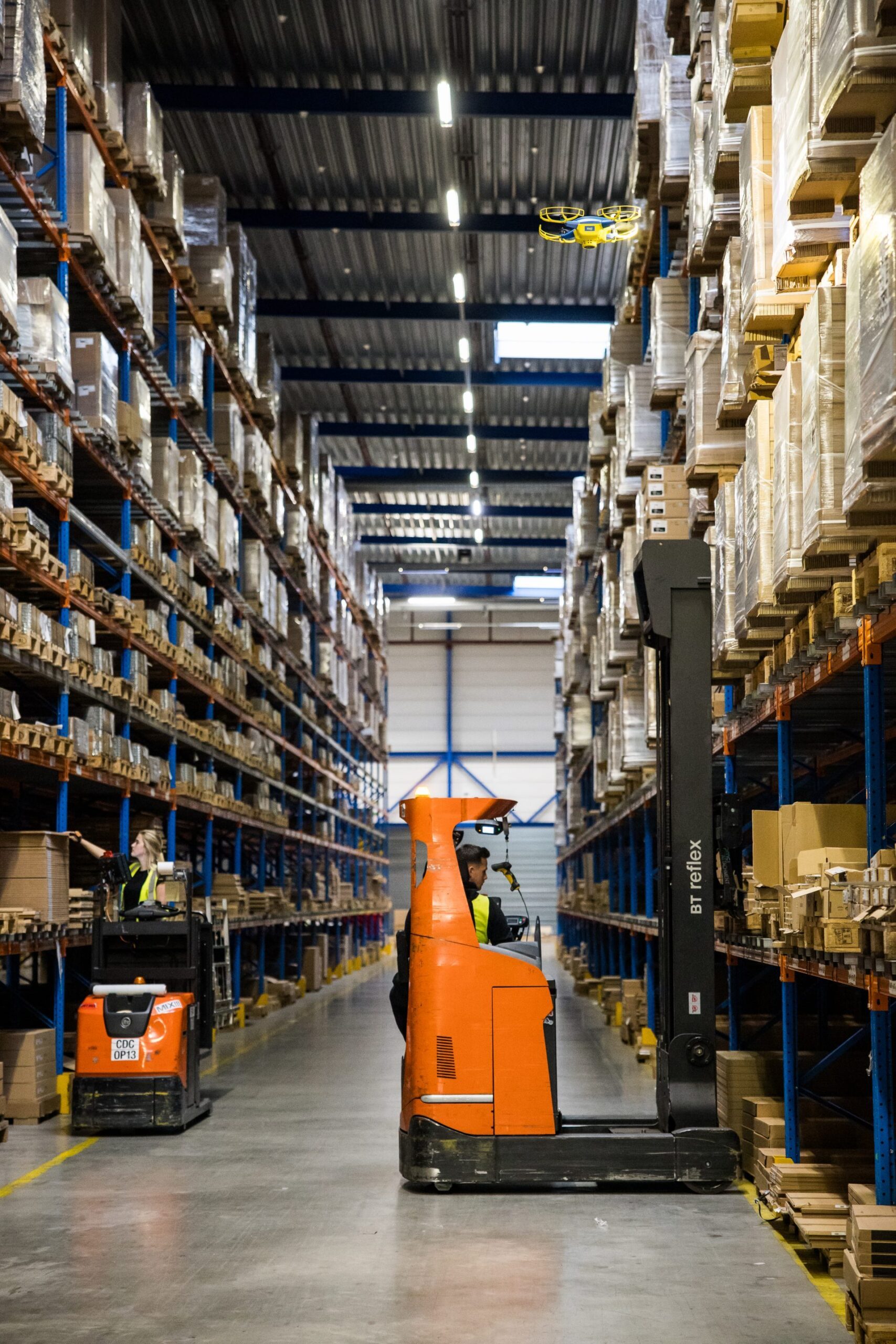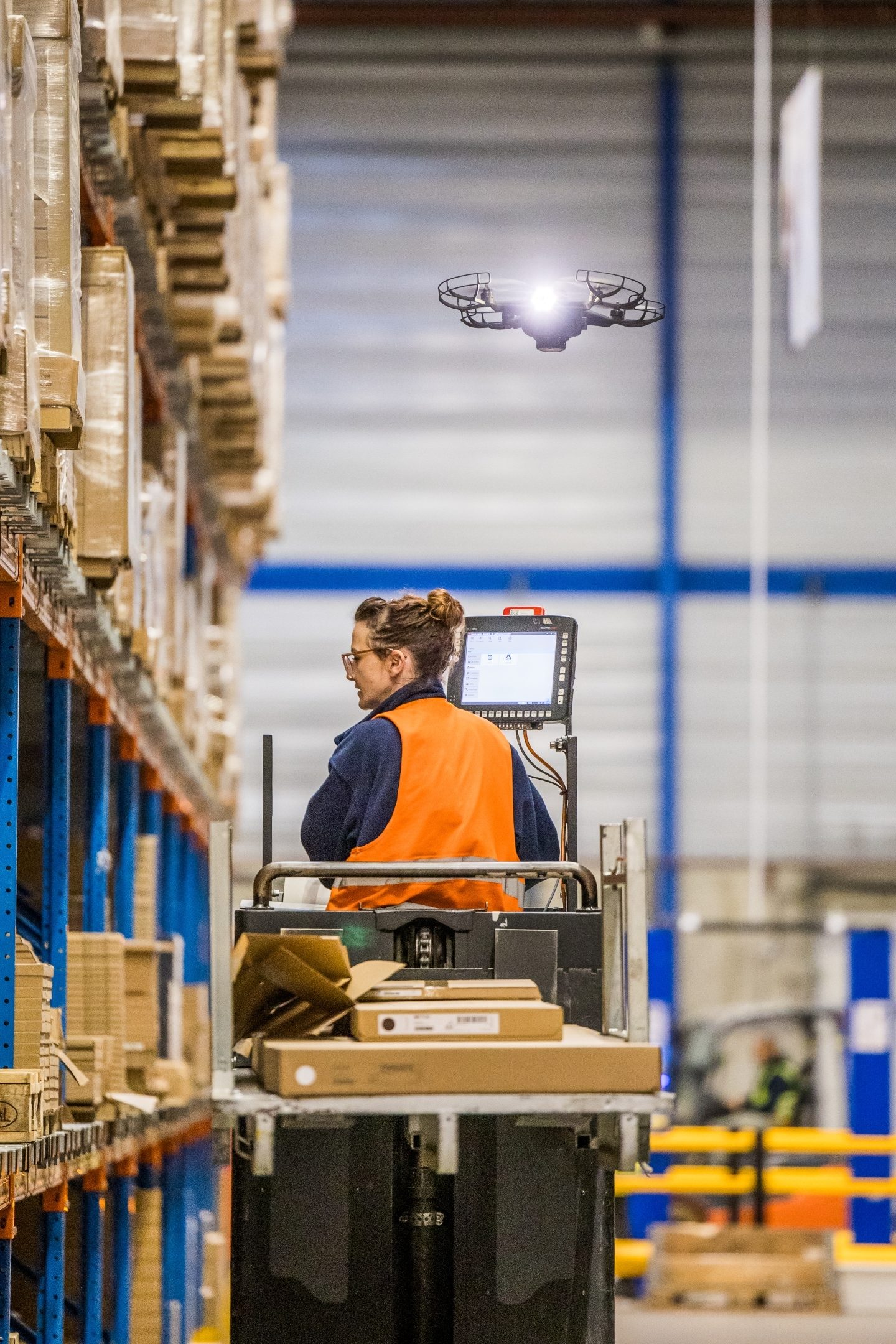 New Drone Technology Enhances Inventory Management and Improves Workplace Ergonomics
New Drone Technology Enhances Inventory Management and Improves Workplace Ergonomics
IKEA has announced the next phase of its drone technology initiative, featuring an advanced AI-powered system capable of operating continuously alongside employees. This system, designed to be integrated into various fulfillment units, including distribution centers, promises to run around the clock, further enhancing IKEA’s operational efficiency.
The decision to expand the deployment of these drones follows a successful year of testing at IKEA’s Distribution Centre in Winterslag, Belgium. With positive results, IKEA is now set to roll out this technology to additional locations over the coming year.
“The IKEA drones use an artificial intelligence-based algorithm to identify and photograph product storage locations,” stated Parag Parekh, Global Chief Digital Officer (CDO) for IKEA Retail (Ingka Group). “In addition, drone flights are pre-scheduled, utilizing a custom indoor positioning system to navigate higher levels of storage locations (for levels 3 and up). Equipped with obstacle detection capabilities, these drones can avoid collisions by rerouting their paths.”
Enhancing Employee Efficiency and Experience
The introduction of 24/7 operational drones is expected to transform inventory management at IKEA, making the process more efficient and reducing the physical burden on employees. By automating the physically demanding task of stock inventory, IKEA aims to free up its workforce, allowing them to focus on tasks that enhance the customer experience. This shift also leads to faster and more precise stock management.
Tommy Niemierowski, Fulfilment Project Implementation Manager at IKEA Belgium, highlighted the benefits: “Implementing a solution that truly makes a difference in our warehouses is an immensely rewarding experience. The installation process itself is relatively straightforward, and the reward is monumental, as it facilitates collaboration amongst various stakeholders.”
With drones handling inventory checks, the need to block aisles and disrupt workflows is eliminated. Employees can take immediate action based on real-time data provided by the drones, which significantly increases product accuracy while decreasing workload. Moreover, the reduction in ergonomic strain allows workers to focus on lighter and more engaging tasks, ultimately improving job satisfaction and long-term health.
Prioritizing Safety and Privacy
 IKEA has also placed a strong emphasis on safety and privacy in the design and operation of these drones. The system is equipped with advanced AI and software, including obstacle detection capabilities, to ensure safe operations in all facilities. Additionally, the solution meets all Data Privacy assessment requirements, protecting the safety, integrity, and privacy of employees.
IKEA has also placed a strong emphasis on safety and privacy in the design and operation of these drones. The system is equipped with advanced AI and software, including obstacle detection capabilities, to ensure safe operations in all facilities. Additionally, the solution meets all Data Privacy assessment requirements, protecting the safety, integrity, and privacy of employees.
Parag Parekh elaborated on the system’s navigation capabilities, stating, “The IKEA drones use an artificial intelligence-based algorithm to identify and photograph product storage locations. In addition, drone flights are pre-scheduled, utilizing a custom indoor positioning system to navigate higher levels of storage locations (for levels 3 and up). Equipped with obstacle detection capabilities, these drones can avoid collisions by rerouting their paths.”
Following the successful trial in Winterslag, IKEA plans to expand this technology across Europe and North America. Installation has already begun at the Distribution Centre in Perryville, IKEA US, with further upgrades and functionalities in development. Future advancements will include unit load and rack inspection capabilities, as well as enhancements to the analytics and insights components of the system.
A “Win-Win”
Marcus Baumgartner, Head of Fulfillment & Core Services at IKEA Retail (Ingka Group), emphasized the company’s commitment to innovation: “We continue to embrace the benefits of technology and innovation, our goal is to create a better experience for our customers and a more ergonomic workplace for our co-workers.”
Claes Lindgren, Global Category Area Manager for Logistics Services (Inter IKEA Group), echoed this sentiment: “The drones are a good example where we can achieve a win-win in both of these areas; by simplifying our processes in the logistics units, and hence, ensuring better inventory integrity leading to a better customer experience.”
As IKEA continues to explore cutting-edge technology and revolutionize its operations, these advancements represent just one step in the company’s ongoing journey to enhance customer experiences and create the stores of tomorrow.
Read more:
- Automated Warehouse Drones: Inventory Audits with 99.7% Accuracy [VIDEO]
- A2Z Drone Delivery Rapid Delivery System Means Drones Don’t Have to Land at Your House
- The Drone That Flies Itself: HoverAir X1 Introduces Pocket-Sized Self-Flying Aerial Camera

Miriam McNabb is the Editor-in-Chief of DRONELIFE and CEO of JobForDrones, a professional drone services marketplace, and a fascinated observer of the emerging drone industry and the regulatory environment for drones. Miriam has penned over 3,000 articles focused on the commercial drone space and is an international speaker and recognized figure in the industry. Miriam has a degree from the University of Chicago and over 20 years of experience in high tech sales and marketing for new technologies.
For drone industry consulting or writing, Email Miriam.
TWITTER:@spaldingbarker
Subscribe to DroneLife here.

 New Drone Technology Enhances Inventory Management and Improves Workplace Ergonomics
New Drone Technology Enhances Inventory Management and Improves Workplace Ergonomics





The whole world is simply amazed by the current transformations in technology. And the use of IT is now the main engine for accelerating global development. Technical innovations in artificial intelligence, IoT, AR, quantum computing, GreenTech and Deep Tech developments are now optimizing the system for developing digital models and helping to optimize work processes. This is the near future of most industries, including transportation and logistics. Today, the latest IT ideas make it possible to accurately calculate the cost of delivery, create a wide range of different capabilities that simplify the planning of logistics processes, facilitate the autonomous performance of certain functions, and even provide an opportunity to predict certain types of risks. This can be seen in the illustrative example of Amazon Integration https://shipstage.com/integrations/amazon
Taken together, such technical innovations and digital business models are an excellent foundation for development in 2024, which will be able to meet the growing demands of customers.